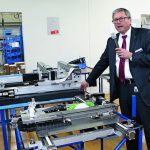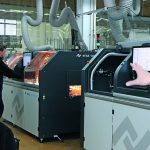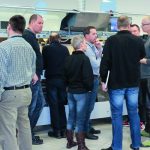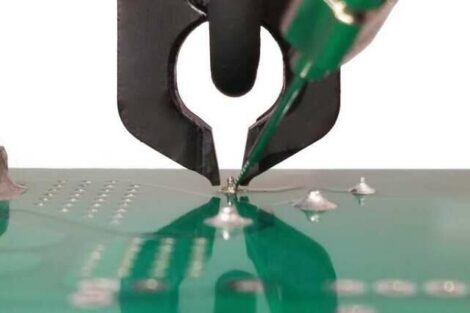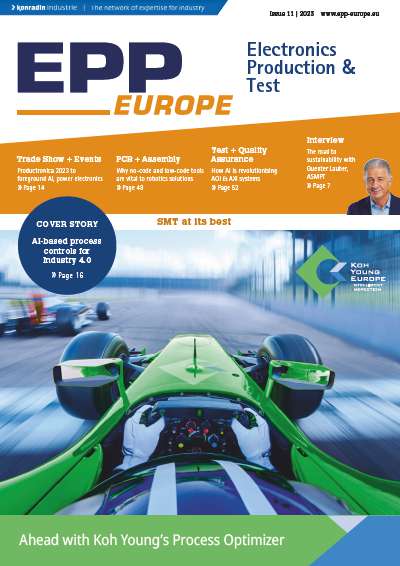With the help of their long-term sales partner Interflux Denmark, Ersa started a successful Technology seminar that occurred on the 23rd and 24th of January, at the headquarters of the company in Wertheim, Germany. Together with around 50 customers and participants from Denmark, the seminar focused on the company’s machines, more specifically their selective soldering technology for Danish electronic manufacturing. Continuing with this trend, the goal is to orientate more Technology seminars towards other countries.
Since the company has been in the soldering business since as far back as 1779, Ersa ensures high quality soldering systems worldwide. This includes several different types of soldering systems, rework stations, inspection systems, stencil printers, soldering station and smoke extractors, solders, and fluxes. As a system supplier with pioneer work, the company stands out for having a smooth production process for their customers.
Advantages of selective soldering systems
Although the market is now demanding for smaller wired components, where solder joints must have a high quality standard to ensure reliability, selective soldering is the way to go for such jobs. This is done by approaching each solder joint individually and thereby individually matching the soldering parameters. By using this method, it will avoid a thermal exposure throughout the assembly. This means that the already existing soldered components will not remelt or get destroyed. There are two different ways of soldering within this system, with either mini wave or multi wave. The mini wave soldering creates maximum flexibility for all possibilities. Depending on the customer’s requirements, the single solder pot can be positioned on the same or different axes, which ensures optimum processing. Combining soldering with multi wave can process complex assemblies in a short amount of time. The Mini-Vario-Wave soldering nozzle is mounted with a few grips on a single tray. The advantage of this is shown in the soldering work of individual areas of a circuit board throughout the wave soldering process. In addition, individual product-specific mini dip soldering nozzles can be used, which solder several pins or components simultaneously to achieve short cycle times. Selective soldering methods are economically successful in the processes are adapted exactly to the applications and quantities. One of the most important factor with this is increasing productivity. In order to achieve high-volume production in selective soldering, simultaneous processes are required. This is where the multi-wave soldering module can be used, that ensures maximum throughput for every need. There are product specific soldering tools with individual soldering nozzles. With this, they are able to solder precisely to the soldering points of the wired components, simultaneously. Regardless of the number of components, soldering times lasts up to two to three seconds per module. An extensive monitoring of process-relevant parameter occurs right after, to ensure high quality of the soldered assemblies.
Selective soldering with mini-waves
The Smartflow 2020 is the smallest selective soldering system available. It is also a batch operation system with a user-friendly modern technology. The pre-heating guarantees an optimal heating of the circuit board before the actual soldering process. Depending on the requirements of the components to be soldered, various heating modules can be selected: lower infrared or a combination of upper and lower infrared emitters. The automatic solder wire feeder supports the integrity of the manufacturing process. Manual filling of the pot is no longer necessary due to the constant monitoring of the solder level, meaning that the idle times of the machine is no longer required. The camera inspects the soldering process in detail to ensure quality in real time. The user is able to observe the process via the Picture-in-Picture (PIP) function on the control panel. Any offline programming of the printed circuit board is carried out by the CAD Assistant 3 directly on the machine or on an external PC program based on CAD data. As a result, the set up times during a product change and restart is greatly reduced. Other benefits of the Smartflow include low maintenance, a modern process visualization, and low maintenance solder pump. This system can also process large circuit board formats and it is ideal for an island production.
The compact Ecoselect 4, configurable as an inline or batch selective soldering system, is designed for small to medium size lines, where flexibility is important. The circuit board dimensions can be a maximum of 508 x 508 mm and can still be used on the reel transport. The optional new advanced power convection top heater ensures consistent component heating throughout. The precision spray fluxer with integrated spray jet control is programmable, which allows for precise and economical application of flux in specific spots or in tracks. As an option, a second spray head is also available, as well as, the new Versaflow dual solder pot system. Both Miniwave pots can be moved in Y/Z direction. This creates new possibilities in the processing of individual assemblies and significantly increases flexibility. The software Ersasoft 5 makes the control of the machine more intuitive and leads to simple operation, simultaneously increasing the range of functions. Interfaces to MES and Traceability systems are also available.
Versaflow 4– the top of the line
The Versaflow 4/55 is the fourth generation of the leading inline selective soldering system and is designed for mass production with high volumes and low product changeover, as well as, for the production of small volumes with frequent product change. Unlike the previous model, Versaflow 3/45, with a maximum of circuit board size of 400 x 500 mm, the latest model is capable of handling a maximum circuit board size of 508 x 508 mm. With its modular design, the system offers an almost unlimited amount of configuration options to meet all customer requirements. Up to four spray heads can be installed in the flux module. A laser system monitors the flux application to the printed circuit board for a secured automated process. For efficient and homogeneous heating of complex components, the new power convection top heating is available with the infrared emitters and convection heaters. Up to three soldering modules can be integrated into the system, which are available as a single, as well as, double soldering module. New dimensions of flexibility has become available with the Versaflex solder module. The two solder pots module creates added value to the production because it doubles the throughput and the use of different solder alloys or nozzle shapes without the need for replacements. The two solder pots are mounted on two independent axle systems, so the pots are individually and independently moveable of one another in the X, Y, and Z direction. This allows for simultaneous soldering in the X or Y direction, as well as, simultaneous soldering of an assembly with two soldering nozzles with different applications. The CAD Assistant 4 also offers offline programming with automatic optimization of cycle times. The intuitive system software, Ersasoft 5, is based on the latest Microsoft technologies and benefits from a user-oriented structure with a 24-inch touch screen. This software also includes continuous process monitoring and visualization, reduction of time required for configuration of parameters, comprehensive process data management, documentation of all process and machine relevant data, and an interface for traceability integration by using ZVEI protocol and MES systems. It is also an option to have two image processing systems.
The Versascan module is located in the front of the flux module. This can scan codes, detect bad boards out of useful PCBs, check the presence and polarity of the component, and control the direction of transport. Up to nine cameras can be used, which allows for a full assessment of the solder joints from a 45° angle. The quality assessment of each solder joint is based on analysis algorithms that can be individually customized.
Although most of the focus was on selective soldering systems, the rework systems were also presented to complete the full picture of this successful event. These systems are for the professional repair of assemblies, soldering tools, and the stencil printer with fully integrated 3D solder paste inspection.
Tours throughout the Ersa production facilities at the end of the official program, gave the guests the opportunity to look behind the scenes. After two eventful days, a lot of interesting knowledge has been exchanged and the enthusiastic Scandinavian visitors were able to take valuable input home to make their own production processes as successful and future-proof as possible. (dj)
SMT Hybrid Packaging, Booth 4-111
Share:



